
Bundling Health Services
In many countries, access to healthcare is poor: globally, more than 40% of the world’s population (3.16 billion) cannot reach a health facility by foot within an hour and almost 650 million people are over one hour away by motor vehicle. In sub-saharan Africa (SSA), 200 million people live more than two hours away from a hospital and 150 million people live more than one hour away from any health center (Weiss et al., 2020)…
In many countries, access to healthcare is poor: globally, more than 40% of the world’s population (3.16 billion) cannot reach a health facility by foot within an hour and almost 650 million people are over one hour away by motor vehicle. In sub-saharan Africa (SSA), 200 million people live more than two hours away from a hospital and 150 million people live more than one hour away from any health center (Weiss et al., 2020). Many countries and governments in sub-saharan Africa face severe fiscal constraints which have worsened since the COVID-19 pandemic (The Economist, 2023). These constraints mean that funding to expand healthcare infrastructure such as clinics and hospitals will not be sufficient to meet Sustainable Development Goal 3: Good Health and Well-Being (SDG, UN). It is therefore important to develop innovative, cost-effective solutions to expand reach with existing health infrastructure.
In 2022, a team of researchers from Yale University, Oxford University and Wageningen University showed that COVID-19 vaccination rates could be increased five-fold within two days through mobile vaccination teams that solved the “last mile” problem (Meriggi et al., 2021) . The intervention, at a cost of $32 per person, was significantly more cost-effective than other approaches to vaccination. Evidence from this study was used to inform the COVID-19 vaccination campaign in Sierra Leone and is presently being expanded to routine child immunization (including malaria and HPV) and other health campaigns.
The largest fixed cost in the study was transportation. Accordingly, an immediate implication is that it would be much more cost-effective to deliver a bundle of useful health services and products simultaneously on one trip instead of single intervention delivery. Current work studies this question: can delivering a bundle of health services increase the cost-effectiveness of health outreach while increasing take up of health products and services and consequently improve population health?
Y-RISE research affiliates are partnering with the Sierra Leone Ministry of Health and Concern Worldwide to test the feasibility of delivering a bundle of health services (Routine Immunization, Vitamin A, Deworming, ORS/Zinc, Chlorine) to rural populations.
Publications
- N. Meriggi, M. Voors,…, A. M. Mobarak* et al, “Last-Mile Delivery Increases Vaccine Uptake in Sierra Leone,”
Nature, vol. 627, pp. 612-619, March 2024, Paper | Journal Link | Data/Replication Code
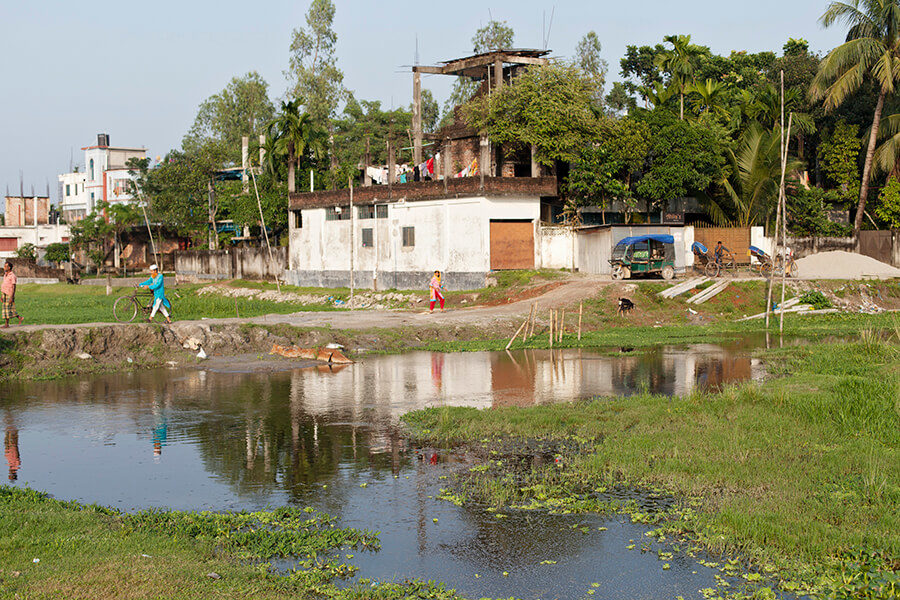
Climate Adaptation: Water Salinity
Researchers: Islamul Haque (Yale University), Mushfiq Mobarak (Yale University), Jared Stolove (Yale), Hasan Mahmud Reza (North South University)
Rising sea levels, tidal flooding, and storm surges are causing sources of freshwater to be contaminated by saltwater affecting 20 million people in coastal Bangladesh. People are forced to consume water with extremely high salt content, leading to increased hypertension, and preeclampsia, among many other health concerns.
Y-RISE affiliates are partnering with Jameel Observatory-Climate Resilience Early Warning System Network (JO-CREWSnet) and BRAC to test the effectiveness and scaling complexities of an entrepreneurship-based approach to address this drinking water scarcity.

Rising sea levels, tidal flooding, and storm surges are causing sources of freshwater to be contaminated by saltwater affecting 20 million people in coastal Bangladesh. People are forced to consume water with extremely high salt content, leading to increased hypertension, and preeclampsia, among many other health concerns.
Y-RISE affiliates are partnering with Jameel Observatory-Climate Resilience Early Warning System Network (JO-CREWSnet) and BRAC to test the effectiveness and scaling complexities of an entrepreneurship-based approach to address this drinking water scarcity.
Delivering clean drinking water at scale to rural households is challenging to begin with, but the added complexity of saltwater intrusion in aquifers and surface water sources makes this a harder problem to solve.
The presence of high levels of sediments in the river system makes centralized water treatment and desalination plants prohibitively expensive (Price and Heberling 2018). Current cost-effective in-home water treatments using chlorine or disinfectant tablets address pathogenic contamination but not salinity (Dupas and Miguel 2017, Kremer et al., 2023) Rainwater harvesting (RWH) (Bobonis et al., 2022; Ghosh and Ahmed, 2022) can partially address drinking water needs during the monsoon season, but RWH has diseconomies of scale and the structures that people in poverty reside in (low, thatched roofs) limit water catchment and storage capacity making it insufficient to meet year-round water needs and cost-ineffective. Reverse Osmosis (RO) based desalination technology is promising: it is used to remove sodium, magnesium, lead, arsenic, and other harmful substances from water. However, RO equipment is expensive, making it impractical for household-level implementation.
After exploring the problem and solutions landscape in partnership with BRAC through extensive fieldwork, we have settled on an entrepreneurship-based approach to deploying reverse osmosis (RO) plants on a large scale as the most promising strategy to address drinking water needs in this region at scale, in a way that would be financially self-sustaining. It requires about USD 10,000 for equipment, land, and installation of a 1000L/hour capacity reverse osmosis plant that can serve the drinking and cooking water needs of 400 households for the entire year.
Central to this strategy is identifying, training, and providing financing to local profit-motivated entrepreneurs who have the capacity, the space, and the willingness to invest in the RO technology to start a business producing and selling fresh drinking water at affordable prices. Many such potential entrepreneurs currently lack the technical knowledge and financial resources needed to start a new water business. To fill this gap, Yale Research Initiative on Innovation and Scale (Y-RISE) affiliates and BRAC – one of the largest NGOs in the world, are introducing a program to facilitate the creation of such water businesses. The Climate Change program and the Water, Sanitation, and Hygiene program at BRAC will help identify potential water entrepreneurs and provide them business and technical training. The BRAC microhfinance team – a for-profit arm of the NGO that accounts for 75% of the annual revenues of this extremely large organization – will provide business loans of up to US$10,000 to each entrepreneur to launch water businesses.
Y-RISE will lead the design and implementation of a randomized controlled trial to generate rigorous evidence on the effects of this program – on entrepreneur business outcomes, water access outcomes, and population health outcomes – in order to inform future scaling decisions. If the results from this study look promising, BRAC has the capacity to scale up this program to reach the 20 million people affected by salinity intrusion in coastal Bangladesh.
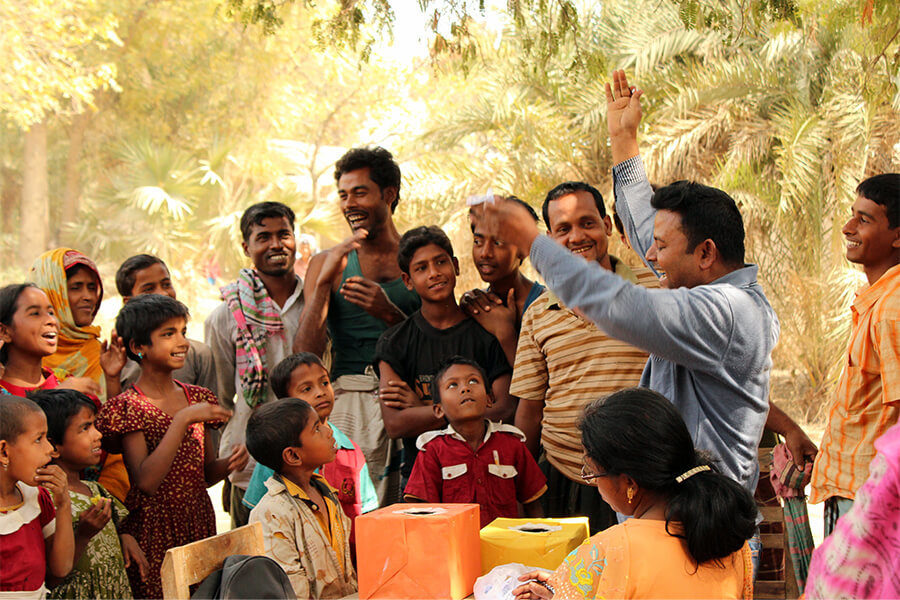
Integrating Mental Health Care into a Public Health System
Researchers: Paula López-Peña (Queen’s University), Gautam Rao (University of California, Berkeley), Mushfiq Mobarak (Yale University)
Mental disorders, including depression and anxiety, account for 16% of disability-adjusted life years (DALYs) globally (IHME Global Burden of Disease). In LMICs, 82% of patients with severe mental disorders die 10 to 20 years earlier than the general population (Liu et al 2017). In addition to effects on health and well-being, mental disorders can perpetuate poverty by distorting economic decision-making (Ridley et al., 2020)…
Mental disorders, including depression and anxiety, account for 16% of disability-adjusted life years (DALYs) globally (IHME Global Burden of Disease). In LMICs, 82% of patients with severe mental disorders die 10 to 20 years earlier than the general population (Liu et al 2017). In addition to effects on health and well-being, mental disorders can perpetuate poverty by distorting economic decision-making (Ridley et al., 2020)
Mental health disorders are common: in Bangladesh, the overall prevalence of mental disorders was estimated at 18.7% (DHS, Bangladesh). They remain untreated, however, due to social stigma and a shortage of specialists – in LMICs, fewer than 8% of those diagnosed with a mental disorder receive treatment (Moitra et al., 2022). Care-seeking delays can be explained, in part, by inadequate mental health education. In Bangladesh, nearly 70% of referred patients were unaware of the seriousness of their condition. Supply-side issues also pose constraints: although psychiatrists are concentrated in large cities, the absence of mental health services at the primary care level leaves patients in rural and semi-urban settings facing average delays of 12 weeks in rural areas and 10 weeks in urban areas. (Hossain et al., 2014).
Integrating mental health services into primary healthcare is necessary to address this unmet need at scale (Patel 2022). Existing randomized controlled trials yield promising results on interventions that target mental health, but they are at too small a scale to speak directly to the question of whether such services can be provided at scale through government health systems (Baranov et al., 2022, Patel et al., 2017)
Y-RISE affiliates aim to fill this gap by assessing the cost-effectiveness of a task-shifting approach within Bangladesh’s public health system. The team will train existing frontliners and government healthcare workers to educate populations, screen, refer, and provide structured counseling. We will compare the cost-effectiveness of two types of structured counseling: individual and group-based.
The project will track patients’ mental health and socioeconomic outcomes, community mental health literacy, and spillover effects on caregivers. The study covers over 8,000 individuals in both rural and urban Bangladesh: an order of magnitude larger than previous studies. This “experimentation at scale” approach helps answer questions around cost-effectiveness, spillovers, and fidelity to implementation protocols at scale. Since services will be delivered through the government health system, the research team will also rigorously evaluate the opportunity costs of adding mental health services to government health workers’ task list, any unintended consequences of that increased workload, including effects on treatment wait times and quality of health services.
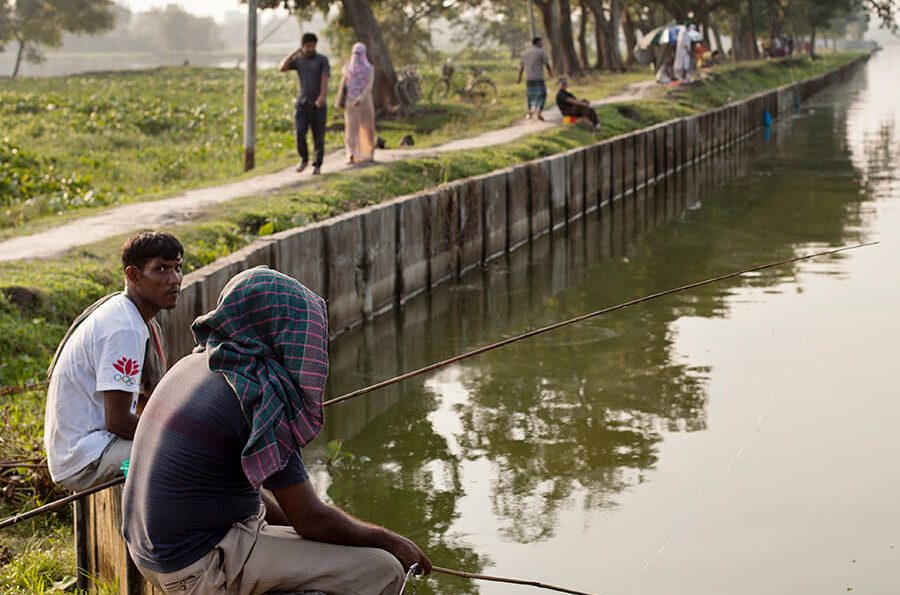
Electrification and Economic Growth
Researchers: Eric Hsu (Yale University), Mitchell VanVuren (Yale University)
Electrification has historically been linked to large-scale economic change – altering labor allocation and boosting productivity and incomes. Today, billions of dollars are spent annually on electrification in low and middle income countries where many households and businesses lack access to electricity. Yet, existing evaluations of electrification projects show mixed results, with some high quality studies suggesting that some mass-electrification programs may have minimal economic impacts in the short and medium run. This presents a puzzle. A recent synthesis paper by Y-RISE researchers summarizes existing evidence and directions for future research…

Electrification has historically been linked to large-scale economic change – altering labor allocation and boosting productivity and incomes. Today, billions of dollars are spent annually on electrification in low and middle income countries where many households and businesses lack access to electricity. Yet, existing evaluations of electrification projects show mixed results, with some high quality studies suggesting that some mass-electrification programs may have minimal economic impacts in the short and medium run. This presents a puzzle. A recent synthesis paper by Y-RISE researchers summarizes existing evidence and directions for future research.
On-going research at Y-RISE explores two areas that may help improve the economic impacts of future electrification programs. One study — whose data collection is currently in progress — examines how poor electricity reliability may affect economic growth by depressing firm entry, exit, and investment and preventing firms from fully realizing the productive benefits of electrification. A second study examines possible complementarities between access to electricity and access to credit, which may impact households’ and firms’ ability to invest in productive electrical equipment, using the concurrent rollout of nationwide electrification and credit access programs in India.
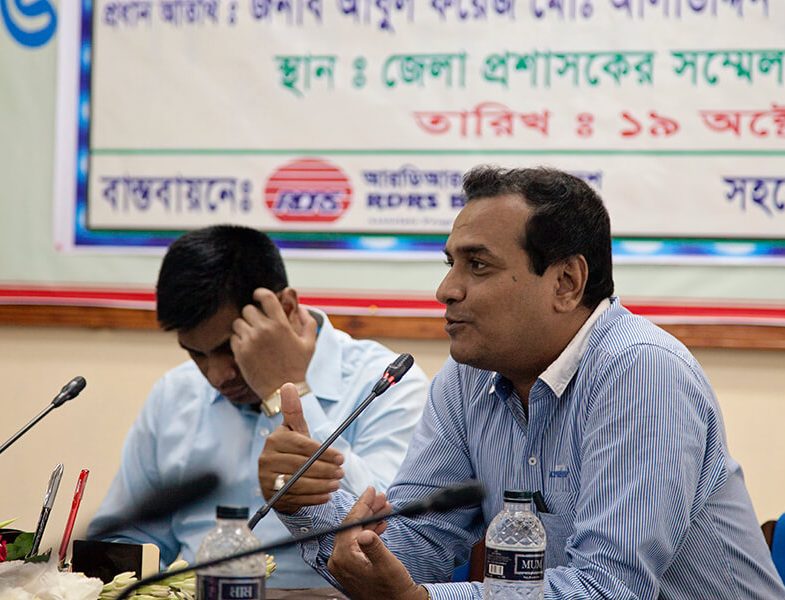
Soft-Skills Training for Entrepreneurs
Researchers: C. Austin Davis (American University), Cynthia Kinnan (Tufts University)
Small and medium sized businesses are the majority of businesses globally and an important source of both economic development and job creation. They account for more than 90% of businesses and over 50% and may contribute upto 40% of national income in LMICs (World Bank). Such businesses, however, face challenges to growth and productivity. There are a number of skills that business owners could benefit from, both business skills such as finance, marketing and human resources and softer skills such as leadership and problem solving.
Small and medium sized businesses are the majority of businesses globally and an important source of both economic development and job creation. They account for more than 90% of businesses and over 50% and may contribute upto 40% of national income in LMICs (World Bank). Such businesses, however, face challenges to growth and productivity. There are a number of skills that business owners could benefit from, both business skills such as finance, marketing and human resources and softer skills such as leadership and problem solving.
In pilot studies of entrepreneurial training, personal initiative training has shown a positive effect on firm performance, outperforming even traditional business skills training. Personal Initiative training is a particular type of training that aims to develop a proactive mindset, encouraging firm owners to continually search for new opportunities, learn from errors and think of ways to differentiate their business. While traditional entrepreneurship and management training focus on knowledge or basic skills, PI training emphasizes strategies for problem solving, learning and taking action.
Y-RISE affiliates and researchers are partnering with Innovations for Poverty Action, BRAC and xx to understand complexities of scaling personal initiative type of training. Such complexities may arise from heterogeneous treatment effects: who benefits most from training and what determines demand for training? Other questions relate to general equilibrium effects: if many people in a neighborhood or business line receive training, does competition attenuate the benefits to entrepreneurs? Still other questions relate to implementation quality at scale: does trainer effectiveness diminish as more trainers are recruited?
Across two projects, in Bangladesh and India, the team will examine these and other questions.
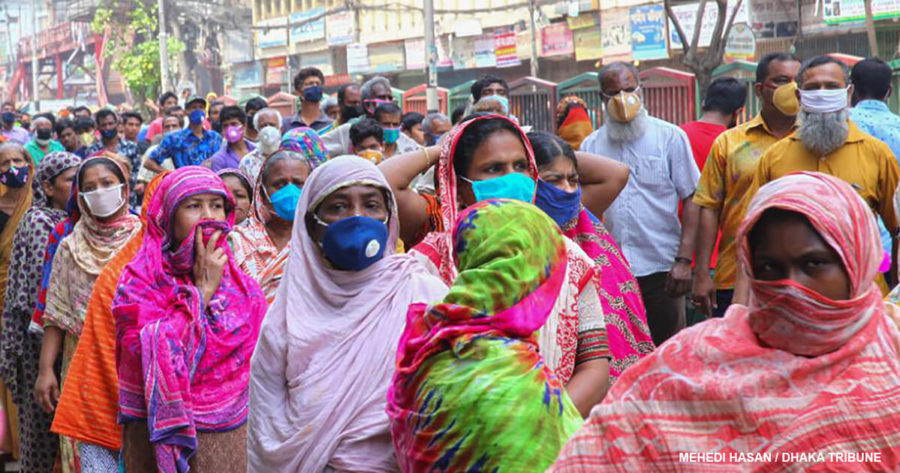
NORMalizing Community Mask Wearing
Affiliated Researchers: Jason Abaluck (Yale University), Mushfiq Mobarak (Yale University), Ellen Bates-Jefferys (Y-RISE). For a full list of authors see here.
Covid-19 was declared a Public Health Emergency of International Concern (PHEIC) on 30 January 2020. By 31 Dec 2020, the death toll had reached 1.8 million globally. The aggressive Delta variant was first identified in India in 2020 and soon became the leading source of deaths in several low and middle-income countries. As vaccinations were yet to be developed, preventive strategies such as masking and distancing were the only defense against the deadly disease.
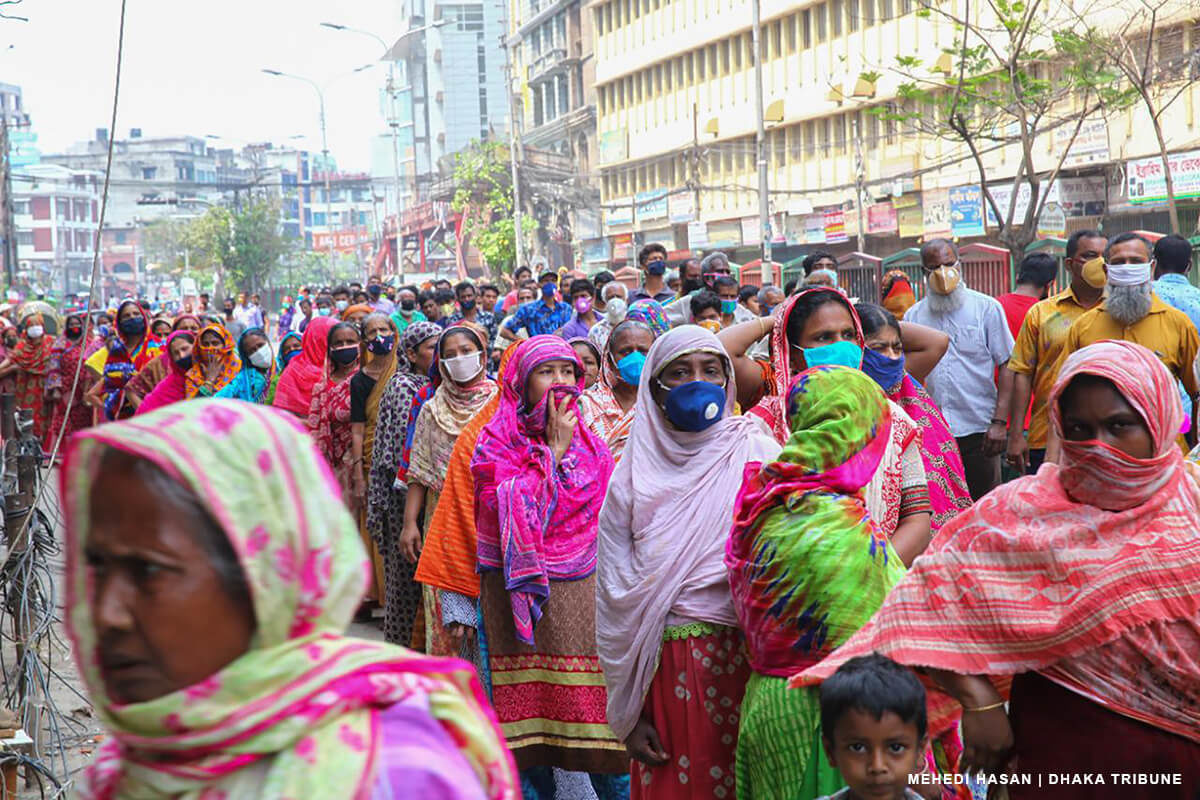
Covid-19 was declared a Public Health Emergency of International Concern (PHEIC) on 30 January 2020. By 31 Dec 2020, the death toll had reached 1.8 million globally. The aggressive Delta variant was first identified in India in 2020 and soon became the leading source of deaths in several low and middle-income countries. As vaccinations were yet to be developed, preventive strategies such as masking and distancing were the only defense against the deadly disease.
Even as the government in Bangladesh had mandated mask wearing as early as April 2020, observational studies reported that this soon tapered off: only half the people observed in a surveillance study by Y-RISE founder and Faculty Director, Mushfiq Mobarak and co-authors were wearing masks in May and a quarter in June.
Mobarak and colleagues at Stanford Medical School, in collaboration with Innovations for Poverty Action, conducted the first large-scale randomized evaluation (340,000 adults in 600 villages) showing the community mask-wearing in a real-world setting reduces COVID-19. The study found that a precise combination of strategies, codified in the NORM model (see below) increased mask wearing in rural Bangladesh from 13% to 42%. This impact was sustained 10 weeks into the evaluation. Further, this increased mask wearing reduced rates of Covid-19 by 9 percentage points. Surgical masks were particularly effective. and measurably reduced community based Covid-19.
The NORM model comprised: No-cost mask distribution, Offering Information, Reinforcement in person and in public and Modeling and endorsement by trusted leaders. (picture)
Scaling up the NORM model
An implementation team and the researchers worked with local partners in Bangladesh, Pakistan, Nepal and India to scale-up the masks model rapidly. To ensure rapid policy take up and adoption, the team created presentations in customized workshops for policy makers, prepared language specific implementation toolkits and assisted teams with a monitoring dashboard. The team also worked to secure masks for the scale-up.
In Bangladesh, the team partnered with BRAC to implement the model in 35 high-risk districts covering around 81 million people. Additionally, in urban areas, volunteers from Youth Bangla and Shakti Foundation distributed masks and did the reinforcement activity at major transportation and convening hubs.
In India, the team worked with SEWA (Self-Employed Women’s Association) in Gujarat to implement the NORM model across 13 districts and 37 districts in other states. Around 800,000 masks were distributed and SEWA engaged nearly 400 staff and members to distribute masks.
In Pakistan, the team worked with the city of Lahore on an urban scale-up to cover 5 million people and the model was recommended in a nationwide policy document.
In Nepal, the NORM model was launched in 3 hotspot municipalities and nearly 35,000 masks were distributed.
For more details, see https://poverty-action.org/masks and download the paper, plain language summary, or presentation here. You can watch the video here.
The implementation toolkit can be found here.
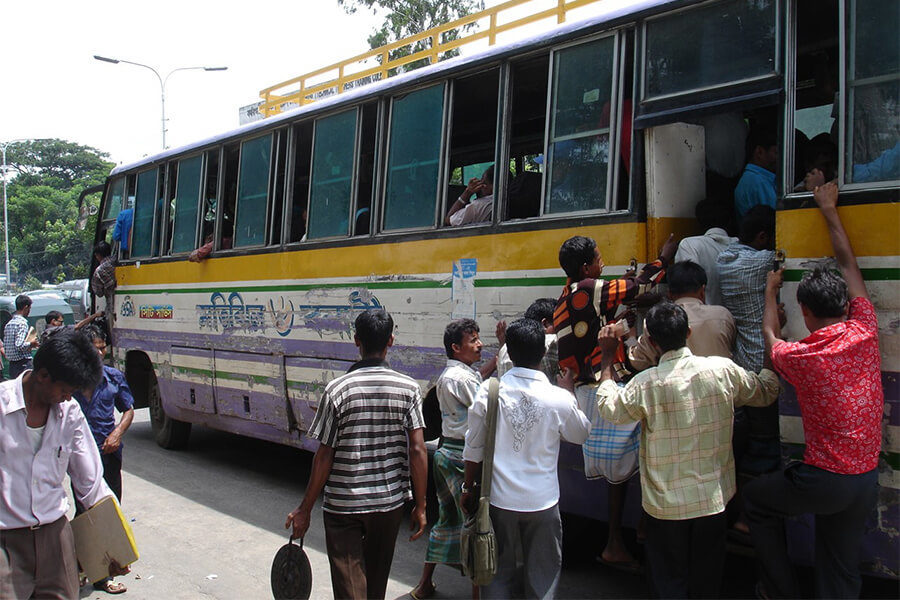
Cox's Bazar Panel Survey
Researchers: Sarah Baird (GWU/GAGE), Alvin Etang Ndip (World Bank), Paula Lopez-Pena (Queen’s University/Y-RISE), Mushfiq Mobarak (Yale University/Y-RISE), Jennifer Seager (GWU/GAGE)
The Cox’s Bazar Panel Survey (CBPS) was launched in 2019 to establish a robust research infrastructure for studying the effects of forced displacement in Cox’s Bazar, Bangladesh. The area became a global focal point after nearly a million Rohingya refugees fled violence in Myanmar in 2017, creating significant social and economic challenges for both the displaced population and the local host communities.
The Cox’s Bazar Panel Survey (CBPS) was launched in 2019 to establish a robust research infrastructure for studying the effects of forced displacement in Cox’s Bazar, Bangladesh. The area became a global focal point after nearly a million Rohingya refugees fled violence in Myanmar in 2017, creating significant social and economic challenges for both the displaced population and the local host communities.
Despite the protracted nature of displacement crises like that in Cox’s Bazar, high-quality, long-term data on host and refugee communities remain scarce. The CBPS provides crucial evidence to inform policies aimed at supporting both displaced populations and their host communities, addressing key questions related to integration, economic participation, and the social impact of humanitarian interventions.
Wave I of CBPS included a “listing sample” of 40,000 households and a representative “panel sample” of 5,000 households, consisting of both host and refugee families. The data collected provided valuable insights into how the influx of refugees affected local economies, labor markets, and social dynamics. The listing sample serves as a pool for experimental evaluations, while the panel sample allows for rich longitudinal analysis and quasi-experimental research.
Wave II of the Cox’s Bazar Panel Survey, conducted between December 2022 and early 2023, builds on this foundation by revisiting the same 5,000 households from the first wave. This follow-up enables researchers to document changes in welfare, household dynamics, and behavior over time, shedding light on the long-term effects of forced displacement. In addition, it allows for new quasi-experimental designs to explore the economic spillover effects on host communities, the mental health impacts of trauma, and the evolution of attitudes between refugees and their hosts.
With the second wave of data collection, CBPS is poised to continue generating critical insights for both academics and policymakers. By maintaining a large, representative panel sample, the survey offers an unparalleled opportunity to study how local economies and social dynamics change in response to large-scale forced displacement. The panel’s design also supports the evaluation of policies and programs that affect refugees and host communities, offering valuable guidance for future interventions in other regions facing similar challenges.

